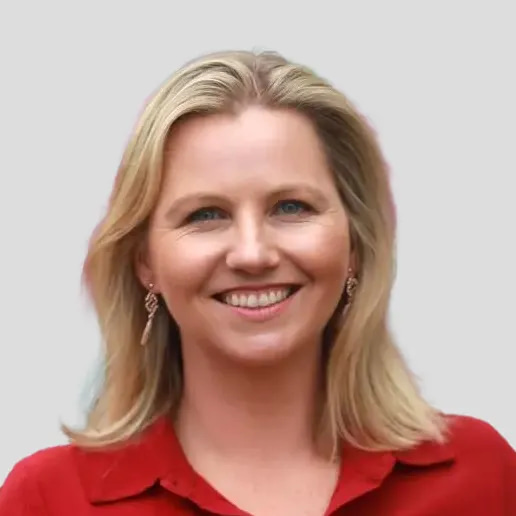Many Victorian government jobs require you to submit a key selection criteria response, along with your resume (and sometimes you’ll need a cover letter as well). You can search for Victorian government jobs here. You may be wondering how to address key selection criteria in order to ensure a competitive application. Our key selection criteria examples may help.
First things first…what are key selection criteria?
Key selection criteria are the skills and attributes deemed necessary to perform the role effectively. They vary between roles and departments, and so you need to write a tailored response for every role you apply for. There are, however, some general guidelines you can follow for Victorian government roles. These guidelines are relevant for most Victorian government departments, though Victorian Department of Education applications and Victorian Department of Health applications have their own specific guidelines.
Key selection criteria may often (but not always) be grouped into aspects such as:
- Specialist/ Technical Expertise
- Capabilities (including Leadership, People Management, Planning and Organising, Self Management)
- Personal Attributes such as Resilience, Self-Awareness, Working Collaboratively, Promote Inclusion)
- Meaningful Outcomes such as Strategic Planning, Partnering and Co-Creation
- Enabling Delivery such as Critical Thinking and Problem Solving
- Authentic Relationships such as Influence and Persuasion, Interpersonal Skills, Communicate with Impact
- People Leadership
Review the application guidelines to work out how to address key selection criteria correctly (every application differs!).
Sometimes, you will be provided with clear guidelines around how long your key selection criteria response needs to be. For example, some roles specify a response of “no more than 2 pages”.
But what if there are no length guidelines?
This does sometimes happen! In these cases you should write 60-120 words per criterion.
Review the guidelines to work out if you need to respond in a cover letter or ‘separate document’ style.
If the guidelines indicate a separate document key selection criteria response is required, you can begin by opening a new Word document and labelling it ‘Key selection criteria’. You should copy and paste each selection criterion from the position description into this document. You should then make each criterion bold. You can then write a short statement under each criterion, outlining clear examples of how you can demonstrate it. You should do this in the SAO format (i.e. Situation, Action, Outcome).
If the guidelines say you should respond in a cover letter, then you should start by writing a cover letter in the normal way. This means addressing it to the contact person, including a summary of your motivation for the role and signing it off in a letter format.
Here are some key selection criteria Victorian government examples – ‘separate document’ format.
Key selection criteria examples (1): Project Officer (VPS4)
Personal Attributes
Resilience
In my previous role as a Project Coordinator at XYZ Corporation, I faced a situation where our project was met with unforeseen challenges that raised concerns among team members and stakeholders. To address this, I took the initiative to hold a team meeting to openly discuss the issues. I encouraged team members to provide frank and honest feedback about their concerns and challenges. During the meeting, I actively listened to their ideas and concerns, seeking to understand the nature of criticism without defensiveness. I acknowledged their viewpoints and assured them that their feedback was valued. This open and constructive dialogue led to improved morale and a renewed sense of confidence within the team. We collectively identified solutions to overcome challenges and successfully completed the project within the established timeline.
Flexibility and Adaptability
At XYZ Corporation, I encountered a situation where a sudden change in project priorities required a shift in our project plan. This change was prompted by external factors beyond our control. My task was to adapt to this new priority while ensuring that our team remained focused and productive. I quickly assessed the impact of the change and reorganised our project schedule accordingly. I communicated the changes transparently to team members and explained the rationale behind the shift. The team demonstrated a remarkable ability to adapt to the change without discomfort. We successfully completed the project on time, despite the altered priorities, showcasing our collective flexibility and adaptability.
Working Collaboratively
While working at DEF Solutions, I participated in a cross-functional project involving teams from different departments. Each team had its own set of goals and objectives. My task was to foster a collaborative environment that allowed for effective information sharing and problem-solving across teams. I initiated regular cross-departmental meetings to facilitate information exchange and ensure a shared understanding of project objectives. I actively encouraged team members to support each other in challenging situations and provided a platform for open communication. This collaborative approach led to improved teamwork and enhanced project outcomes. By promoting an environment where teams could work together seamlessly, we achieved a higher level of efficiency and productivity.
Promote Inclusion
At GHI Solutions, I observed instances where certain team members were inadvertently excluded from important discussions and decision-making processes. My task was to promote a culture of inclusion and diversity within the team. I initiated regular diversity and inclusion training sessions for team members, focusing on the importance of inclusive language, behaviour, and decision-making. I also established a feedback mechanism where team members could confidentially report instances of exclusion. Over time, the team became more attentive to their words, expressions, and body language. They recognised and rectified behaviours that were not inclusive. This initiative resulted in a more inclusive workplace where individuals from diverse backgrounds felt valued and heard.
Meaningful Outcomes
Strategic Planning
At LMN Innovations, I was tasked with aligning our project planning and work processes with the organisation’s strategic goals. My task involved identifying how our project objectives could contribute to the broader organisational strategy. I conducted strategic planning sessions with our project team to define clear objectives that linked our project’s strategies to actionable steps. I guided team members through the strategic planning process, ensuring that our project aligned with the organisation’s overarching goals. Our project outcomes became more closely aligned with the organization’s strategic priorities. This approach empowered team members to see the bigger picture and understand how their work contributed to the organisation’s success.
Partnering and Co-creation
While working at the Department of ABC, I was responsible for a project that required active collaboration with external stakeholders and subject matter experts. My task was to ensure that users and stakeholders were actively involved in the design process to gather insights, ideas, and input. I identified and partnered with key stakeholders, including end-users and subject matter experts. We worked collaboratively to create prototypes and coordinated user testing to validate our strategy, program, or product. Decisions were made within agreed timeframes, and all parties were kept informed. This collaborative approach resulted in a solution that was well-received by end-users and met the needs of stakeholders. The project’s success was attributed to our active partnering and co-creation efforts.
Innovation and Continuous Improvement
While at the Department of B, I recognised the need for process improvement within the project team. My task was to seek opportunities for continuous improvement and innovation to enhance project outcomes. I encouraged team members to offer suggestions and ideas for process improvement. We leveraged existing continuous improvement systems and procedures to enhance the quality and efficiency of our work. I created a supportive environment for learning and innovation by actively seeking input and feedback from team members. The project team became more proactive in identifying areas for improvement. This culture of innovation led to streamlined processes, increased efficiency, and improved project outcomes.
Future Focus
At the Department of A, I was responsible for developing project objectives that aligned with both team and organisational goals. My task was to consider the future aims and goals of the team and organisation when prioritising work. I proactively stayed up-to-date with best practices and leading developments in my area of expertise. I integrated relevant technologies into my work processes and supported team members in doing the same. By aligning our work with future organisational objectives and embracing relevant technologies, we achieved more sustainable and forward-thinking project outcomes. This approach also allowed us to respond effectively to changing industry trends.
Enabling Delivery
Critical Thinking and Problem Solving
At STU Corporation, I encountered a situation where a project issue arose without clear guidelines for resolution. My task was to analyse the issue, determine the best course of action, and implement a solution. I engaged in deep analysis, seeking input from team members and subject matter experts when necessary. I determined the additional information needed to make an informed decision and took decisive action to resolve the problem. By applying critical thinking and problem-solving concepts, we successfully resolved the issue and maintained project progress. This experience reinforced the importance of adaptable problem-solving skills.
Project Delivery
While at VWX Solutions, I was responsible for coordinating tasks to ensure project delivery aligned with agreed outcomes. My task was to define tasks, guide team members in executing work activities, and monitor task progress. I established clear task assignments and timelines, ensuring that each team member understood their responsibilities. I regularly monitored progress against plans and took corrective action when required to maintain project alignment with objectives. Our projects consistently met agreed outcomes and timelines. Effective coordination and monitoring ensured that tasks were completed efficiently and in line with project goals.
Data Literacy
At YZA Technologies, I was tasked with analysing data to inform project decisions. My task involved considering data sources, collection methods, and data structure impacts on data analysis. I conducted data analysis by generating descriptive statistics and utilising relevant data visualisation techniques. I ensured that my analyses were guided by subject matter experts and stakeholders. My proficiency in this area ensured that relevant data was collected and assessed and that projects were able to be guided by this data effectively.
Here are some key selection criteria examples in a cover letter format.
Key selection criteria examples (2): Senior Finance Officer
Dear (Contact Name) and Selection Panel,
I am writing to express my interest in the Senior Finance Officer role at the Department of RTY. With extensive experience in accounts payable and financial transactions, I am confident that I possess the skills and experience required for this role.
As an Accounts Payable Officer at XYZ Company, I was responsible for processing invoices and payments using MS Dynamics GP Accounting Systems and WorkPlace. I was able to track payments and produce transactional reports, ensuring that all payments were made on time and in accordance with established policies and procedures. For example, I was able to identify a discrepancy in an invoice and work with the supplier to resolve the issue, ensuring that the payment was made accurately and on time.
As an Accounts Payable Officer at XYZ Company, I was responsible for administering and analysing accounts payable services in line with legislative and compliance requirements. I made recommendations for improvements to ensure that the organisation was compliant with all relevant regulations. For example, I identified a gap in the organisation’s compliance with GST regulations and worked with the finance team to implement a new process to ensure compliance.
I was also responsible for processing, reconciling, and reporting on financial transactions in line with established policies, procedures, and compliance requirements. I was able to reconcile a large volume of transactions and produce accurate financial reports for the finance team.
Within this role, I was able to communicate effectively and build strong relationships with suppliers, customers, and other stakeholders. For example, I was able to negotiate payment terms with a supplier, resulting in improved cash flow for the organisation.
I was able to work collaboratively with other members of the finance team to achieve common goals. For example, I was able to work with the finance team to implement a new process for reconciling financial transactions, resulting in improved accuracy and efficiency.
I am confident that I possess the skills and experience required for the Senior Finance Officer role. I am excited about the opportunity to apply my skills and experience to this role and organisation. Thank you for considering my application.
Sincerely,
[Your Name]
Hopefully these key selection criteria Victorian government examples will be helpful when crafting your own response. If you need further assistance working out how to address key selection criteria, our key selection criteria writers have been writing winning applications since 2012. Please get in touch for a quote.



